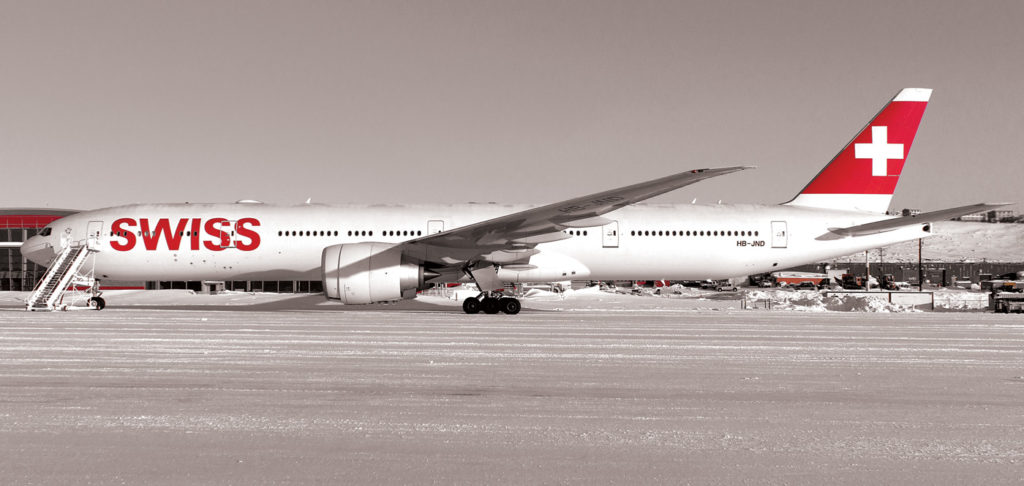Estimated reading time 5 minutes, 15 seconds.
As the ambient air temperature at Iqaluit International Airport dipped to -34 C on a frigid day in early February, a bright white Gulfstream G500 business jet touched down on the frozen runway and taxied onto a ramp coated with snow.

Days earlier, Gulfstream had announced the aircraft had entered the final stage of its flight test and certification program, which included cold weather testing in the capital city of Nunavut, near the shores of the North Atlantic.
“This has been the premier cold weather testing location–one of them in the world, for sure,” said John Hawkins, director of the Iqaluit airport (CYFB), in an interview with Skies.
“Airbus tests most of their new airframes and engine variants here. Boeing’s tested engine variants,” he said. “Every year, we can expect at least one or two campaigns to come through.”
Hours after the G500 touched down, a green test vehicle of the slightly larger Gulfstream G600, also expecting certification in 2018, was scheduled to arrive. It was the latest in a long line of new aircraft that have been put through their paces at Iqaluit, including the Bombardier Global 7000 and Airbus A320neo.

“We have great weather for that,” said Hawkins. “We can pretty much count on -30 [temperatures] for a month or six weeks of the year, and not a terrible amount of wind.”
The fact that Iqaluit is a preferred OEM testing spot is a point of pride for the airport, which underwent a $300 million refurbishment last year that included a new terminal building, runway reconstruction, new taxiways, expanded apron structures, a new fuelling system, and a new combined services building.
But CYFB is much more than a cold-weather proving ground. It’s also a vital connection between Iqaluit and other Nunavut communities, and an essential link between Canada’s newest territory and southern Canada.
“Our only year-round mode of transportation here is air,” said Hawkins. “That means our groceries come here by air, and our medical travel is done by air. All of our administrative functions, all our travel for visiting–everybody here travels by air.
“There are no two communities in the whole territory that are linked by road, so you can’t get from one place to another without getting on an airplane.”

Iqaluit International Airport traces its origins to 1942, when the United States Air Force (USAF) built a major airbase at Koojesse Inlet, near the southern tip of Baffin Island. The airbase was planned as a link to Europe during the Second World War, but it was under-used, and later acquired by Canada’s federal government.
During the Cold War, present-day Iqaluit (then known as Frobisher Bay) became a centre for Distant Early Warning (DEW) Line construction operations, contributing to the chain of 63 radar and communications facilities that stretched from Western Alaska to Greenland.
Frobisher Bay officially became Iqaluit in 1987, reverting to its original Inuktitut name. Today, the city is a government, cultural and commercial centre, with a population of about 7,800 people.
The airport has played a crucial role in Iqaluit’s growth, and its refurbished facilities are a way of keeping pace with the rapid, ongoing development of Nunavut’s various communities.
“They all have young populations and they’re all growing,” said Hawkins. “So all of this commercial growth and all of the population growth, that sort of increasing standard of living–that all feeds into the need for growth at this airport.”

Iqaluit saw about 18,000 aircraft movements in 2017, a number that has been stable since the late 1990s, although the types of aircraft have changed, and more cargo is travelling on dedicated freighters.
An estimated 140,000 passengers came through the terminal building last year, up from 83,355 in 1999. The new 10,000-square-metre (107,639-square-foot) structure can process 650 passengers at peak hours.
Iqaluit’s 2,629-metre (8,626-foot) runway is one of the longest in the country, and one of only two paved runways in Nunavut, with the other located at Rankin Inlet.
The airport continues to be a technical stop for transatlantic commercial aircraft, and a fuelling stop for aircraft travelling to and from Europe, the United States, and Asia.
First Air and Canadian North both offer daily scheduled service to Ottawa from Iqaluit, as well as routes to Yellowknife, N.W.T., and several smaller Northern communities. First Air also serves routes to Edmonton and Winnipeg from Iqaluit.
“This is the connection to the South,” said Hawkins. “This is the hub that everything comes through.”
As the communities around it grow, the Iqaluit airport is expected to grow with them, playing the essential role it always has–as a cold-weather testing site, a community hub, and a link to the rest of the country.
“The role it plays in the community is akin to the old-style train station,” said Hawkins.
“It’s quite a bit elevated over what it does in [a larger] city, where everyone kind of avoids the airport if they can.”

